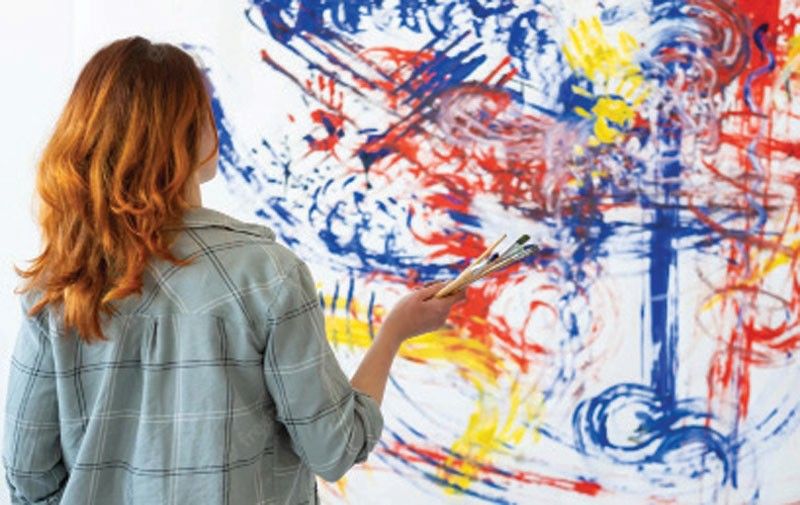How Art Therapy is Used to Address Social Issues and Trauma
Art therapy is a profound and versatile approach to mental health and emotional well-being, combining the creative process of art-making with therapeutic techniques. It has gained prominence for its unique ability to address social issues and trauma, offering an alternative pathway for individuals to express emotions and experiences that may be difficult to articulate through language.
Art therapy isn't just a tool for individual healing; it is also a powerful method to address societal challenges, such as violence, inequality, and collective trauma. In this article, we will explore how art therapy is utilized to tackle these complex issues, providing hope and healing where traditional methods may fall short.
The Role of Art Therapy in Addressing Social Issues
 Social issues, such as poverty, discrimination, and violence, often leave deep psychological scars on individuals and communities. Traditional therapy methods may not always reach those who are most affected, either because of stigma, lack of access, or the inability to verbalize their struggles.
Social issues, such as poverty, discrimination, and violence, often leave deep psychological scars on individuals and communities. Traditional therapy methods may not always reach those who are most affected, either because of stigma, lack of access, or the inability to verbalize their struggles.
Art therapy, however, transcends these barriers by offering a non-verbal outlet for expression. It allows individuals to process their emotions and experiences through the creation of visual art, which can be less intimidating and more accessible than talk therapy.
Art therapy has been particularly effective in working with marginalized communities, such as refugees, survivors of domestic violence, and people living in poverty. These groups often experience multiple layers of trauma and stress, and traditional therapeutic approaches may not adequately address their needs.
Through art therapy, individuals can explore their identity, express their pain, and work through their trauma in a safe and supportive environment. This process not only helps individuals but can also foster a sense of community and collective healing, which is essential for addressing broader social issues.
Art Therapy as a Tool for Trauma Recovery
Trauma can leave individuals feeling disconnected from themselves and others, making it difficult to process and move forward from their experiences. Art therapy offers a way to bridge this gap by providing a means of expression that is not reliant on verbal communication. This is particularly important for individuals who have experienced trauma, as they may struggle to find the words to describe their feelings.
Art therapy allows trauma survivors to externalize their emotions and experiences, making them more tangible and manageable. The act of creating art can also be a grounding experience, helping individuals to reconnect with their bodies and the present moment. Additionally, the therapeutic relationship between the client and the art therapist provides a safe and supportive space for exploring difficult emotions and experiences.
Research has shown that art therapy can be effective in reducing symptoms of post-traumatic stress disorder (PTSD), anxiety, and depression. It has been used in a variety of settings, including hospitals, schools, and community centers, to support individuals in their healing journey. By addressing trauma through art, individuals can reclaim their sense of self and agency, which is often lost in the aftermath of traumatic experiences.
Addressing Collective Trauma Through Community Art Projects
Collective trauma, such as that caused by war, natural disasters, or systemic oppression, affects entire communities and can have lasting impacts on social cohesion and collective identity. Art therapy has been used as a tool for addressing collective trauma by bringing people together to create art that reflects their shared experiences and aspirations for the future.
Community art projects, such as murals, public installations, and collaborative art-making events, can serve as a form of social action and healing. These projects provide a space for individuals to come together, share their stories, and create something beautiful out of their pain. The process of creating art in a group setting can also help to rebuild trust and connections within the community, which are often fractured in the wake of collective trauma.
Furthermore, community art projects can raise awareness about social issues and inspire action. By creating art that reflects the experiences and struggles of a community, individuals can engage others in meaningful conversations and advocacy efforts. This can lead to greater visibility for marginalized groups and contribute to social change.
The Future of Art Therapy in Social Change and Trauma Recovery
As the field of art therapy continues to grow, its potential to address social issues and trauma is becoming increasingly recognized. Art therapists are working in a variety of settings, from schools and prisons to disaster relief efforts and human rights organizations. Their work is making a difference in the lives of individuals and communities around the world.
The future of art therapy lies in its ability to adapt to the changing needs of society and to continue finding innovative ways to address complex social issues. This includes integrating art therapy into existing social services, expanding access to marginalized groups, and exploring new modalities, such as digital art therapy.
In conclusion, art therapy offers a unique and powerful approach to addressing social issues and trauma. By providing a means of expression that goes beyond words, it allows individuals and communities to heal, connect, and create positive change. As we continue to face global challenges, the role of art therapy in promoting mental health and social justice will only become more critical.
References:
- American Art Therapy Association
- National Institute of Mental Health - Art Therapy and PTSD
- World Health Organization - Trauma and Mental Health
- British Association of Art Therapists
- Psychology Today - The Healing Power of Art Therapy
- American Psychological Association - Art Therapy and Social Change
- National Endowment for the Arts - Art and Social Impact
- Society for the Arts in Healthcare
- UNESCO - Art and Cultural Healing
- Harvard Medical School - Art Therapy and Mental Health






































